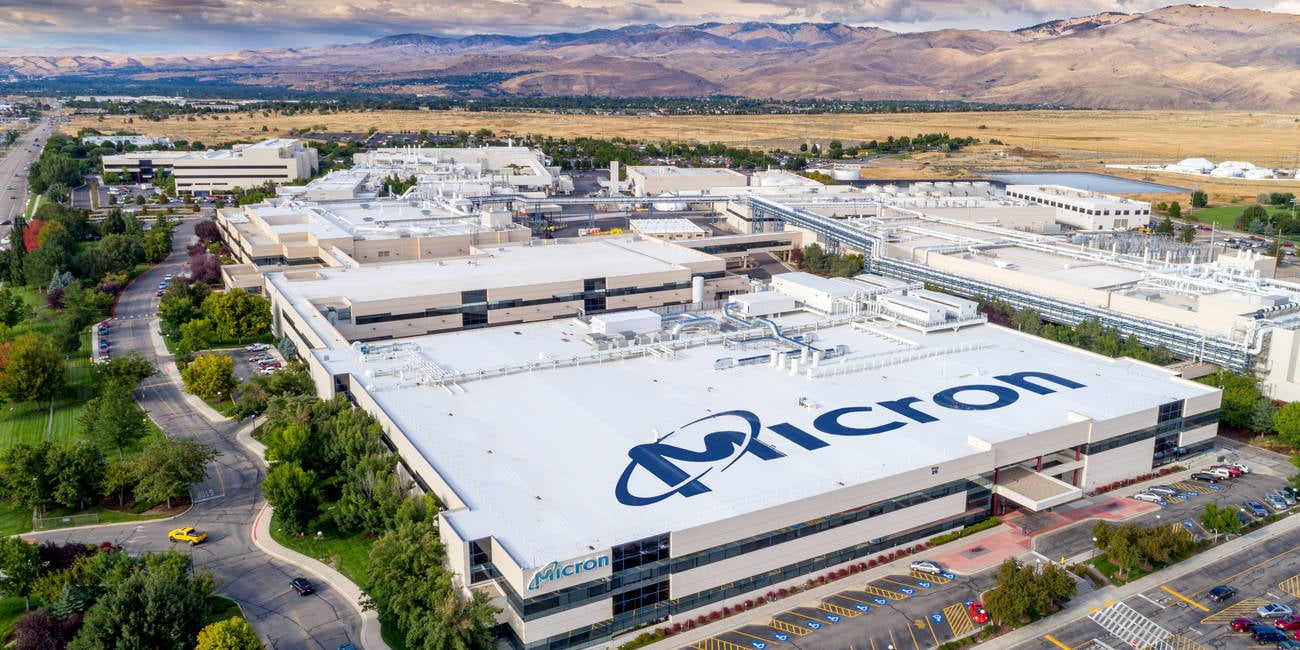Chipmakers Cut Output, Investment – But Government Bucks Never Go Out Of Style

Chipmakers are cutting back on production capacity and investment as demand for semiconductors continues to fall away, with Micron and Kioxia the latest to announce adjustments in light of the worsening outlook.
Micron reported worse than expected figures in its 2022 earnings reported today, and said in response that its capex investment in production in 2023 will be about $8 billion, down more than 30 percent from this year.
Likewise, Kioxia, formerly Toshiba Memory, said in a notice on its website that it intends to make production adjustments at its Yokkaichi and Kitakami flash memory facilities that will see its wafer start production volume reduce by approximately 30 percent, starting from October.
Regular Reg readers will know that we have been reporting on the weakening chip market for a while now. Just this week, research outfit TrendForce predicted a 15 to 20 percent cut in NAND flash pricing during this quarter, as demand slackens and memory suppliers find themselves sitting on a glut of stock that was built up in response to supply chain issues.
However, Gartner warned during the summer that semiconductor sales growth would likely fall off over the rest of this year, and forecast a revenue decline for chipmakers in 2023 as rising inflation and consumers cutting back on spending take a greater toll on demand.
Micron: Worse is yet to come
For Micron, this has hit home already. The memory manufacturer declared revenue of $6.64 billion for its fiscal Q4 2022, down from $8.64 billion in the previous quarter and $8.27 billion for the same period last year.
Micron's stock took a temporary hit when the results were announced, as the size of the drop in its earnings guidance still managed to surprise the markets, despite Micron earlier playing down expectations owing to weak demand from computer makers and other customers, reflecting falling consumer spending.
For the full fiscal year 2022, Micron reported revenue of $30.76 billion, up from the $27.71 billion in 2021. In its earnings call, Micron President and CEO Sanjay Mehrotra said that the Q4 financial results were impacted by "rapidly weakening consumer demand and significant customer inventory adjustments across all end markets."
As a response, Micron aims to decrease production on earlier forecasts through significant cuts to fiscal 2023 CapEx and by reducing utilization in its fabs.
"We expect calendar 2023 industry DRAM supply to grow well below demand growth. We are modeling a mid-single digit percentage growth in DRAM industry supply in 2023, which would represent the lowest ever industry supply growth. NAND supply growth in calendar 2023 is also expected to fall below demand growth," Mehrotra said.
Given the elevated supplier inventories entering calendar 2023, "we expect industry profitability to remain challenging in 2023", he added.
Wanna be in our club?
The US is said to have held a preliminary meeting with Asian partners of a working group focused on cooperation in the semiconductor supply chain.
The so-called Chip 4 Alliance – already dubbed the Fab 4 – includes the US, Taiwan, Japan and South Korea, according to reports, although Korea is said to be wary of incurring the wrath of China.
Reuters said the group aims to collaborate in the future to address supply chain problems like those seen over the past couple of years, although it will inevitably be seen as another way for the US to attempt to counter China's growing influence.
Micron went on to put out guidance for fiscal Q1 for revenues of $4.25 billion (+-$250 million), way below last year's $7.6 billion figure, and nearly $1.5 billion below the average street estimate.
But Mehrotra said he is confident the memory industry supply-demand balance will eventually be restored, as a result of reduced industry supply growth combined with the long-term demand growth drivers for memory.
"Following a weak first half of fiscal 2023, we expect strong revenue growth in the second half of fiscal 2023 as bit demand rebounds following substantial improvement in customer inventories," he stated.
Kioxia also said it was confident that the market will bounce back, saying it will continue new product development and target sustainable long-term growth, as the company remains confident in the medium to long term growth outlook for the flash memory market.
Despite the announced cuts, Micron reaffirmed its commitment to invest $40 billion between now and the end of the decade in leading-edge manufacturing facilities in the US, contingent on the company receiving the promised financial support from the US CHIPS Act, of course.
Mehrotra said that Micron will soon announce a second high-volume US DRAM manufacturing site, following the earlier decision to build one alongside its research and development facility at its Boise, Idaho headquarters. These will fulfil its requirements for additional wafer capacity starting in the second half of the decade and beyond, he claimed. ®
Google Leverages AI To Automatically Lock Phones During Theft
Amid increasing incidents of mobile phone thefts, Google has launched an AI-based feature that automatically locks the s... Read more
Microsofts Emissions Surge Nearly 30% Amid AI Demand Growth
Microsoft has reported a nearly 30% increase in its emissions from 2020 to 2023, underscoring the challenges the tech gi... Read more
Impact Of AWS Leadership Change On The Global AI Race
The recent leadership transition at Amazon Web Services (AWS), with Adam Selipsky stepping down and Matt Garman taking t... Read more
The Global Impact Of App Stores On Technology And Economy
Since Apple launched its App Store in 2008, app stores have become a central feature of the digital landscape, reshaping... Read more
Alibaba's Cloud Investment Strategy: Fuelling AI Innovation And Growth
Alibaba Group's cloud business, Alibaba Cloud, has emerged as a powerhouse in the tech industry, spearheading innovation... Read more
Elon Musk Takes On Government 'Censorship': A Clash Of Titans In The Digital Arena
Elon Musk's recent endeavors to challenge government-led content takedowns mark a significant development in the ongoing... Read more

